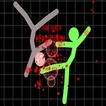


























































































































Fighting Games: Their Evolution, Mechanics, and Impact on Gaming Culture
Embark on a journey through the evolution of fighting games, exploring their transformation from arcade classics to intricate 3D experiences. This article will cover the mechanics that define the genre, its rise to mainstream popularity, and its lasting cultural impact.
From their inception, fighting games have captivated audiences with their fast-paced action and competitive nature. Initially simple in design, these games challenged players to outmaneuver their opponents using a limited set of moves. As technology advanced, so did the complexity of these virtual brawls, introducing a wider array of characters, each with unique abilities and fighting styles.
The mechanics of fighting games are a blend of reflexes, strategy, and mind games. Players must master the art of timing, spacing, and predicting their opponent’s next move to gain the upper hand. This has created a deeply engaging experience that tests both physical dexterity and mental acuity.
The genre’s rise to popularity can be attributed to its thrilling one-on-one combat and the rise of competitive gaming scenes. Tournaments began to draw large crowds, both in-person and online, turning what was once a casual pastime into a professional pursuit for many.
Fighting games have also left an indelible mark on gaming culture. They’ve fostered a sense of community, camaraderie, and even rivalry, which has transcended the games themselves. The genre has influenced other forms of media and has become a staple in the world of esports, where players compete for prestige and prizes on a global stage.
As we look to the future, fighting games continue to evolve, incorporating new technologies and ideas to enhance the player experience. Their legacy is not just in the virtual arenas where battles are fought, but in the lasting connections they’ve created among players around the world.
The Strategic Gameplay of Fighting Games
At the heart of every fighting game lies a complex dance of strategy and skill. The genre is renowned for its intense combat mechanics that demand a high level of precision and quick reflexes. However, beneath the surface of these fast-paced battles is a deep layer of strategic gameplay that separates novices from masters.
Character diversity is a cornerstone of this strategic depth. Each fighter boasts a unique set of moves, strengths, and weaknesses, compelling players to learn not just one, but multiple playstyles. This variety ensures that matches are not just tests of reaction time but also of adaptability and knowledge.
Timing and spacing are critical components in the strategic arsenal of a fighting game enthusiast. The ability to execute moves at the precise moment, to control the space between fighters, and to anticipate an opponent’s actions can turn the tide of a match. These elements require a player to be in tune with the rhythm of the game, making split-second decisions that could lead to victory or defeat.
Player psychology also plays a pivotal role. Understanding an opponent’s tendencies, baiting them into making mistakes, and adapting to their strategies mid-game are all part of the mental warfare that occurs in a match. It’s a high-stakes game of chess where each move is a calculated risk, and the ability to read an opponent’s mind can be as powerful as the swiftest combo.
In essence, the strategic gameplay of fighting games is a blend of physical dexterity and mental acuity. It’s a genre that rewards practice, patience, and perseverance, and it’s this depth that keeps players engaged, constantly striving to improve and outsmart their opponents in the virtual arena.
Evolution of Fighting Game Design: From 2D Brawlers to 3D Fighters
The landscape of fighting games has undergone a remarkable transformation, evolving from the pixelated 2D brawlers of yesteryear to the visually stunning 3D fighters of today. This evolution is not just a testament to technological progress but also to the innovative spirit of game designers who have pushed the boundaries of what’s possible within the genre.
In the early days, 2D fighting games presented a side-view of the combatants, with gameplay mechanics that were constrained by two axes of movement. This simplicity, however, laid the groundwork for the intricate systems that would follow. As graphics improved, these games began to feature more detailed sprites and backgrounds, enhancing the visual experience without compromising the tight controls that fans had come to love.
The leap to 3D brought about a new dimension of gameplay, literally and figuratively. The addition of depth to the fighting arena introduced fresh strategies and movement options, such as sidestepping, which added layers of complexity to the combat. This shift required players to think not only in terms of horizontal and vertical space but also along the z-axis, creating a more immersive and tactical experience.
Despite these changes, the core essence of fighting games remained intact. The focus on one-on-one combat, the importance of mastering a character’s move set, and the thrill of outsmarting an opponent continued to be the genre’s hallmarks. The transition to 3D also allowed for more dynamic camera angles and fluid character animations, making battles more cinematic and engaging.
The design evolution of fighting games reflects a balance between innovation and tradition. While embracing new technologies and design philosophies, the genre has managed to preserve the fundamental mechanics that have made it a cornerstone of competitive gaming. This delicate equilibrium ensures that, regardless of dimension, the spirit of the fight lives on.
The Cultural Legacy and Future of Fighting Games
Fighting games have woven themselves into the fabric of gaming culture, becoming more than just a genre; they are a phenomenon that has shaped social interactions and entertainment. Their cultural legacy is evident in the vibrant communities that have formed around them, where players share strategies, celebrate victories, and learn from defeats. These communities often extend beyond the game, fostering friendships and rivalries that can last a lifetime.
The genre’s competitive nature has also paved the way for the rise of esports, turning local arcade battles into international tournaments watched by millions. Fighting games have contributed to the legitimization of competitive gaming as a sport, showcasing the skill and dedication required to compete at the highest levels. The excitement and drama of these competitions have captured the imagination of audiences worldwide, creating a new breed of spectatorship.
Looking ahead, the future of fighting games is poised to be shaped by technological advancements and evolving player expectations. Virtual reality and augmented reality could revolutionize the way we experience these games, offering an unprecedented level of immersion. Artificial intelligence is set to provide smarter, more adaptive opponents, challenging players in new and exciting ways. Online connectivity will continue to break down geographical barriers, enabling a global community where anyone can face off against the best in the world.
As the genre continues to adapt and grow, its impact on gaming culture is sure to deepen. The essence of competition, the joy of mastery, and the thrill of the fight will remain at its core, inspiring future generations of gamers. The cultural legacy of fighting games is not just in the memories they create but in their enduring ability to bring people together in the spirit of friendly competition.